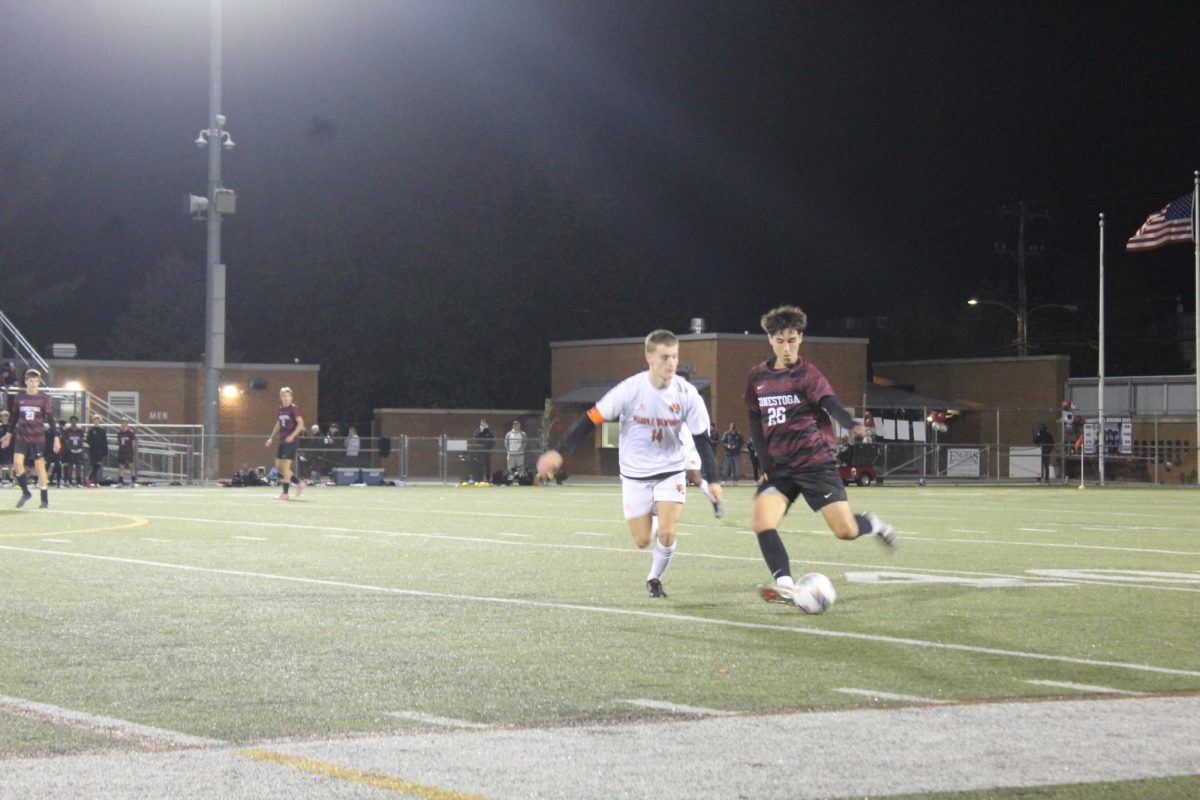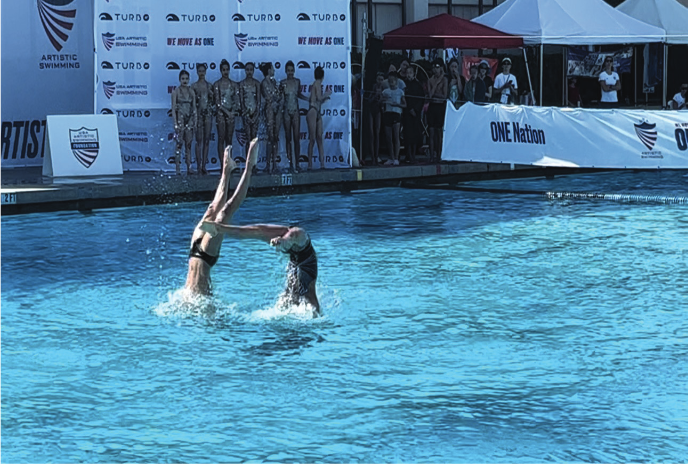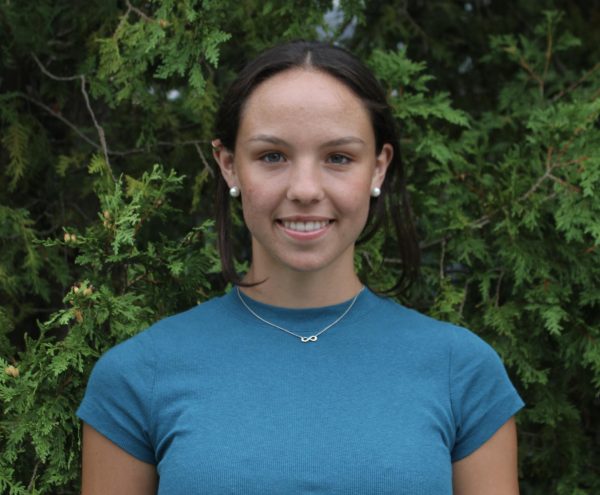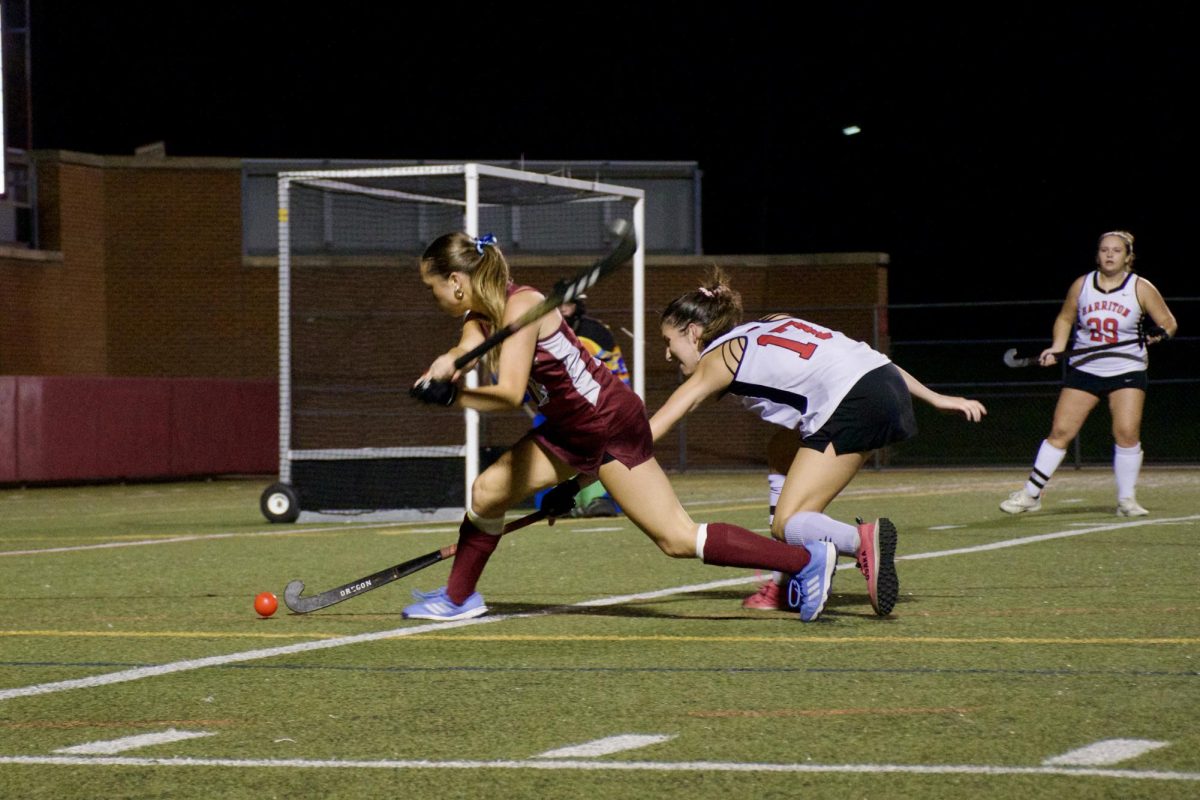By Hannah Simon and Alexa Willrich, Co-Sports Editor and Staff Reporter
Roaming the pool deck of the Phoenixville YMCA, artistic swimming coach Heather Johnson oversees the execution of her newest choreography. Beginning when she was 11 and coaching once she graduated high school, she watches as her favorite part of her job unfolds — athletes dancing in and out of the water, lifting their teammates to the count of the music. Now in her 16th year of coaching, Johnson cannot see her life without synchronized swimming.
“I love when something hits — a correction sinks in, and they are able to do something better than they were before and are excited about it,” Johnson said. “The awe of accomplishing something they did not think they could.”
Currently, three Conestoga students are members of Philadelphia Freedom Valley Synchro. The team starts practices in September and the first competition is usually in December with some clinics scattered around it. Competitions then continue through January into June, with qualifying meets progressing through three levels: association, region and nationwide.
The team practices Sundays, Mondays, Wednesdays and Fridays, with practice sessions looking different depending on the age group or day. When in the pool, the team does lap workouts, along with exercises for different skills specific to synchro. The team also utilizes the YMCA’s gym and track for strength training, endurance and dry-land training.
“Land-drilling” is an example of this, in which athletes interpret the routine on land to ensure everyone knows the elements.
“Synchro may look easy, but that’s the point. Anything that looks effortless requires an inordinate amount of work behind the scenes,” Johnson said. “It demands strength, flexibility, lung capacity, endurance, agility (and) creativity. There are aspects of gymnastics, dancing and speed swimming, but upside down underwater. Swimmers usually hold their breath for 50% or more of the time in a four-minute routine.”
Formally known as artistic swimming, synchro is a sport where one or more members of a team perform coordinated movements in time to music. The sport was popularized in the late 1800s by Annette Kellerman, an Australian champion swimmer, and it was officially added to the Olympics in 1984 during the Los Angeles games. The sport recently had a dramatic change in the way routines are scored for the 2022- 25 competitive cycle. Routines are judged based on completely different guidelines, such as height, execution and synchronization.
“Everything changed this year, so it was really confusing,” sophomore swimmer Serena Dong said. “I’m interested (in seeing) how this plays out because our recent meets have been very messy and results really odd.”
From Jan 25-29 members of the 13-15 and 16-19 age groups attended a training camp at the U.S. Olympic and Paralympic Training Center in Lake Placid, New York, the home to both the 1932 and 1980 Olympic Winter Games. The clinic, designated for older athletes on the team, ranged in skills both in and out of the water — from the best ways to do different moves in the water, to workouts aimed at specific skills and flexibility training, to ideas for choreography. Former coach, Canadian National Team Director and national team consultant — Sue Nesbitt — was at the helm, alongside her daughter Barb, a member of the national team who swam synchro at Ohio State University. Coaches were also invited to get an update in light of the changes.
“It was intimidating. You ate and lived around Olympians the entire time. I was scared that it was going to be a lot of intense training, but it was more tactical,” Dong said.
According to Johnson, communication, as in any team sport, is important, but especially in synchro. When somebody is not locked in physically or mentally, it disrupts the team’s performance. Though, the athletes have a deep bond, with the younger girls in the 13-15 division looking up to those in the 16-19 division; in this way, the synchro world is like a family.
“Of course we want to do well at competitions, so we train hard, but we also want the swimmers to have fun and enjoy the sport,” Johnson said. “We help them work together as teammates to find common goals to achieve together. The mission is for the motivation and desire to show up (and be) ready to do their best.”
Hannah Simon can be reached at [email protected].
Alexa Willrich can be reached at [email protected].























































































